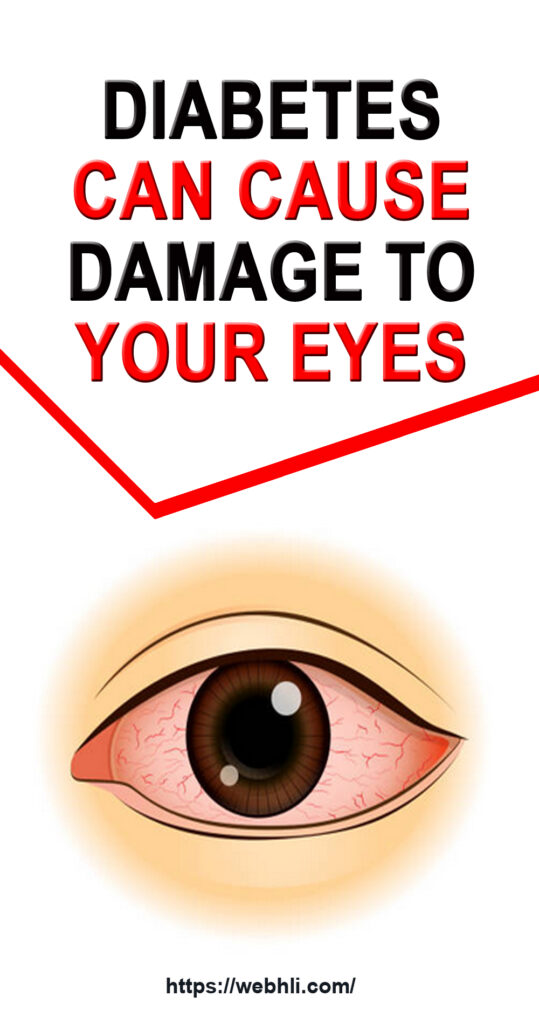
Your eyes are one of the largest major organs of your body affected by Type 2 diabetes over the long-term. Some eye disease, for example glaucoma and cataracts, also occur in non-diabetics, but they appear at a higher rate and earlier in people who have diabetes. Diabetic retinopathy is limited to people with diabetes and may lead to blindness. Previously, blindness was inevitable but this is not always the cases these days.
Diabetes can cause damage to these parts of your eye:
1. The Retina: This is the tissue in the back of your eye that transmits visual images received by your eye to the brain through the optic nerve.
2. Lens: The front of your eye that brings in light and images.
3. Vitreous: This is the clear matter in your eye between the lens and the retina.
4. Optic Nerve: The largest nerve of the eye. It carries visual images via electric impulses from the retina to your brain.
5. Blood vessels: The vessels carry blood to your eye and these can become clogged just like other vessels in your body.
Check out these related articles, too:
Lower Blood Sugar Levels Right With 5 Food Choices!
Is It Safe For Diabetics to Eat Cranberries?
Choosing a Diabetic Meal Plan to Stop Diabetes Symptoms
High And Low Blood Sugar Levels Chart Provides You With a Clear Idea
10 Tips On How To Reverse Diabetes Naturally
Both high blood pressure and raised blood sugar levels can contribute to a higher risk of eye disease.
The most common symptom of diabetic eye disease is blurred vision. This usually develops gradually and is often mistaken for a symptom of aging or a need to change an eyeglass prescription. As soon as you begin to notice a change in clarity, you need to focus on controlling your blood sugar as much as possible. This is the fastest and best form of treatment for blurred diabetic vision.
Blurred vision can also be a sign of retinopathy. This occurs when the blood vessels within the eye begin to bleed from increased pressure. Failure to keep your blood pressure under control is the easiest way to develop retinopathy. Your doctor can perform a tiny incision to relieve the presence of blood that has leaked out and clear a path for light to make its way to the retina.
If you begin to experience cloudy vision, this could be the formation of glaucoma. Glaucoma appears as tiny clouds in your eye, blocking your vision and making everything appear "milky". Surgery is the most common method of treatment used to remove these clouds of glaucoma.
Diabetes Foods to Eat – You Have a Lot to Eat Without Fear
Amazing Diabetics Breakfast Ideas
10 Diabetic Foods to Avoid for Blood Sugar Control
Diabetics can also develop dark spots in their field of vision. This is another indication something serious is going on. An ophthalmologist should be contacted immediately to find out the source of the problem.
If any of these symptoms are ignored, over time they can cause you to see rings of light in your vision. This is a critical sign there is a serious disorder needing to be immediately addressed. If you begin to see three rings, it is quite possible damage has already occurred.
While symptoms can occur slowly over time, there are instances where vision can suddenly be lost in one eye or both. If this occurs you naturally need to see an eye specialist immediately. The quicker you seek help, the higher the chances they will be able to salvage at least some of your vision.
Type 2 diabetes is no longer a condition you must just live with. It need not slowly and inevitably get worse and affect your eyes. Now is the time to take control of the disease... and take back your life.
For nearly 25 years Beverleigh Piepers has searched for and found a number of secrets to help you build a healthy body.
The answer isn't in the endless volumes of available information but in yourself.
Article Source: http://EzineArticles.com/7236816


 Protected by Patchstack
Protected by Patchstack